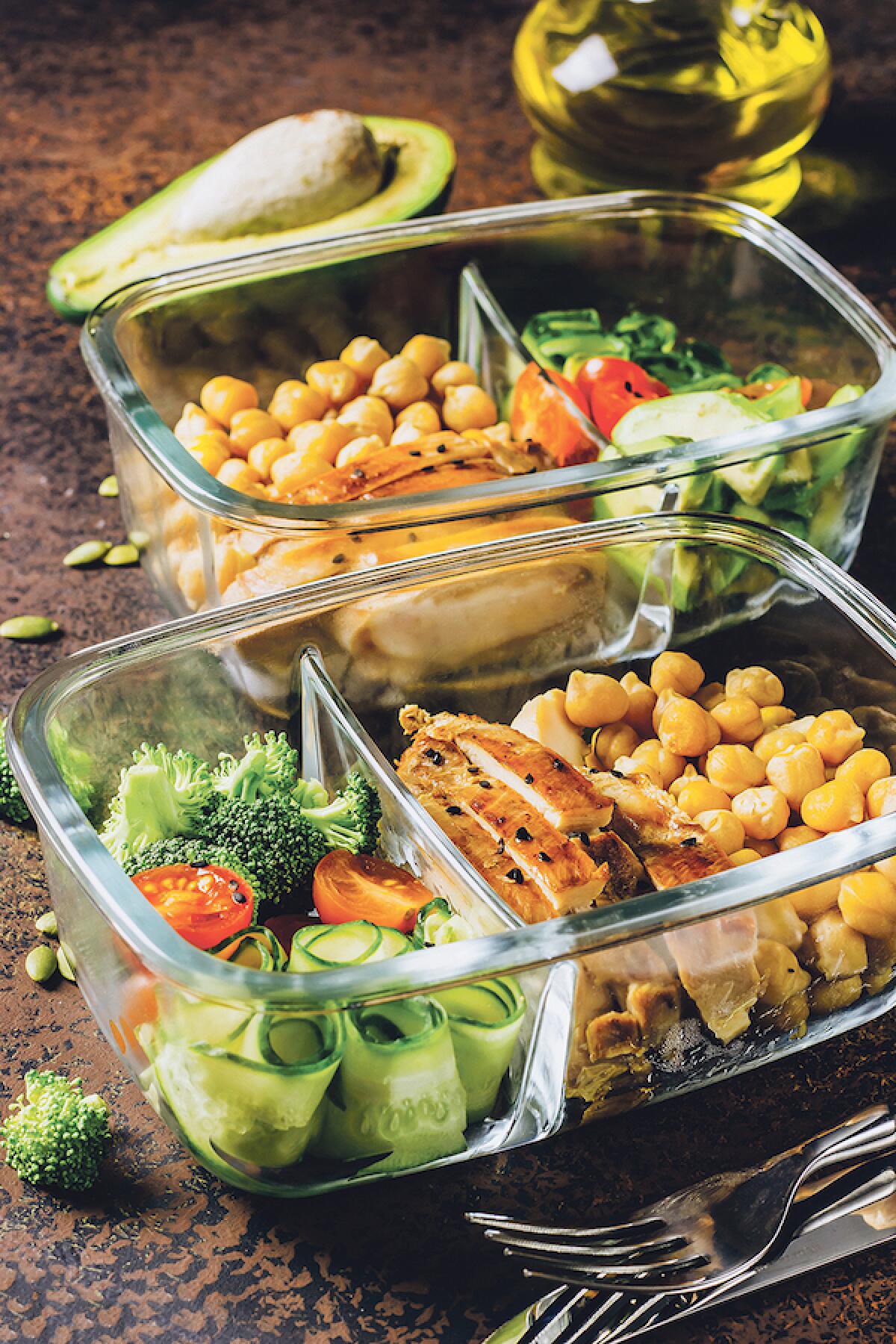Meal Plan (Without a Plan) Buy Healthy Ingredients and Always be Ready to Cook

Whether it’s a weekday or the weekend, many of us try to eat nutritious, delicious foods at every meal. But what happens when a healthy, active, retired lifestyle gets in the way of a carefully planned breakfast, lunch, or dinner?
Here’s how to purchase smart, healthy ingredients that can find their way into multiple recipes and cooking methods, so you’ll never feel guilty about waste after saying “yes” to a late-notice brunch or a spur-of-the-moment weekend trip.
Many of us have spent our entire lives hearing about the “healthy food pyramid” and it’s just as relevant now as during our grade school years. In fact, Harvard’s School of Public Health recommends that consumers think of the pyramid as a grocery list.
The pyramid generally starts with a base of grains and other starches, with fresh fruit and vegetables at the next level, and then meat, fish, and dairy products above that, with fats, oils and sweets at the top. There are variations for vegans and vegetarians, gluten-free diets, and for those who have diabetes or other special health needs. And many healthy food pyramids now feature reminders about daily exercise, weight control, and moderate alcohol consumption.
The culinary conundrum is how to turn these victuals into quick, unfussy meals for those on the go.
Let’s start with snacks. Whether we’re willing to admit it to ourselves or others, we all munch between meals. How do you mesh snacking with a healthy diet? The National Institute of Aging recommends replacing high-calorie snacks like chips with nutrient-dense edibles like raw carrots, taking a bite out of fresh fruit instead of sugar-packed processed fruit products, and sipping water flavored with fruit or vegetables rather than sodas. In other words, snack away! Just do so with healthful intention. For meals, several books and websites offer advice on how to eat smarter, as well as recipes for healthy dishes that are easy to prepare and don’t cost a small fortune.
Recipes at Eat Smart, Move More (eatsmartmovemoreva.org) range from snacks like Garden Fiesta Tuna Pockets, Hummus Wraps, Italian Bean “Paddies” and Chicken Salad Cups that can be ready to eat in less than 15 minutes. Also, find healthy versions of Whole Roasted Chicken, Beef Stroganoff, Turkey Lentil Chili, and Tuna Noodle Casserole that require 30-45 minutes of preparation and cooking. Many recipes share base ingredients, so you can make one, both, or choose depending on your craving.
Think seniors don’t have anything in common with Millennials and Gen Z? The Top 10 Smart Foods for College Students listed in the Healthy Living section on WebMD (webmd.com) are equally pertinent to older people who want to fuel their body and brain.
Among recommended brain-smart munchies are blueberries, oatmeal, salmon, dark-green vegetables, walnuts, hemp seed, and (believe it or not) chocolate. WebMD also offers tips on healthier shopping, cooking, and sugar substitutes, as well as advice on special diets like gluten-free, vegetarian, and vegan.
Speaking of special diets, those with diabetes should check out the Diabetes Food Hub (diabetesfoodhub.org) created by nutrition experts at the American Diabetes Association. The website offers recipes in English and Spanish broken down into culinary categories like breakfast, snacks, lower carb, budget-friendly, Mediterranean and cooking for one or two.
The Cooking Light website (cookinglight.com) lists 20 ingredients that can be used in a variety of healthy dishes with staples like eggs, spinach, chicken broth, and cremini mushrooms, to current darlings like Greek yogurt and couscous, to more exotic items like edamame, canola-based mayonnaise, and Japanese panko breadcrumbs.
Many healthy ingredients with long shelf lives are throwbacks to foods our grandparents might have kept in their pantry - brown rice, pickled vegetables, dried fruits, and dehydrated milk or cocoa powder. Canned foods also last longer than most fresh ingredients, but the USDA does recommend shopping for items that don’t contain added sugars, preservatives, or sodium.
For a great reference, the USDA’s My Food Data site (tools.myfooddata.com) provides nutritional information on hundreds of ingredients and food brands, as well as a recipe nutrition calculator that details protein, fat, and carb ratios and another online tool that compares calories, carbs, fat, and protein content between various popular foods.
-Joe Yogerst